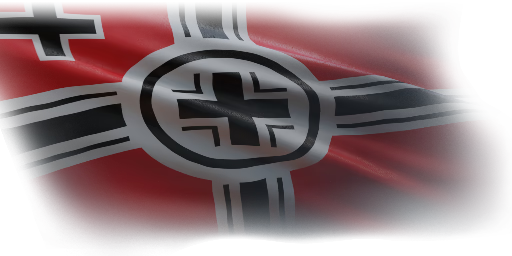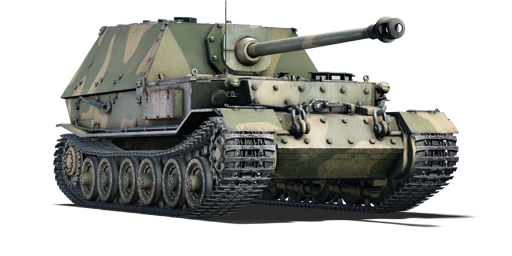



The Ferdinand (Sd.Kfz. Index: Sd.Kfz. 184) was a German heavy tank destroyer. The developement of Ferdinand sparked from the competition between Porsche and Henschel regarding the Tiger heavy tank. Porsche thought his prototype would be chosen over the Henschel one, so he decided to produce approximately 100 chassis of the VK 45.01 that would later become the Tiger I. However, Henschel prototype was chosen instead, and it was decided to use the already manufactured Porsche hulls as a base of a heavy tank destroyer, armed with the newly developed Krupp PaK 43 8,8 cm gun. The Ferdinand was designed to supplement light tank destroyers such as Marder III in offensive role. Due to the petrol-electric transmission used, the conversion was quite simple with the engines moving into the space forward in the hull where turret was previously installed. Behind the engines, a casemate was made, housing the gun and four out of the six crew members. The engines had very high fuel consumption and the entire vehicle was plagued with reliability issues. However due to the very strong frontal armour, the Ferdinand had approximately 10:1 kill to loss ratio highest of all tank destroyers used in the war. 91 examples were made, and they all saw action on the Eastern front at the Battle of Kursk and also in Italy. Usage at Kursk shown that the Ferdinand was vulnerable to infantry attacks due to no secondary armament, which lead to modifying of the remaining 48 surviving vehicles. The upgraded vehicles were renamed to Elefant.
The Ferdinand was introduced during the Closed Beta Test for Ground Forces before Update 1.41. The Ferdinand is armed with very powerful 8.8 cm cannon, allowing to destroy nearly any opponent at distance over 1 km, while the thick armour making the Ferdinand a very tough to penetrate from the front. However, the 200 mm frontal armour does not reach to the frontal turret cheeks which are only 80 mm thick. A hit into these will detonate the ammunition and cause fatal explosion. Due to its weight and size, Ferdinand is also not very mobile, it should be used as a sniper from behind ally tanks or to hold choke points as it can withstand direct frontal fire from majority of the enemies it sees in battles.
| Ammunition | Type | Armor penetration (mm) at a distance: | |||||
|---|---|---|---|---|---|---|---|
| 10 m | 100 m | 500 m | 1000 m | 1500 m | 2000 m | ||
| APCBC | 237 | 234 | 222 | 207 | 193 | 180 | |
| HE | 19 | 19 | 17 | 16 | 14 | 14 | |
| HEAT | 110 | 110 | 110 | 110 | 110 | 110 | |
| APCR | 279 | 273 | 252 | 227 | 205 | 185 | |












Mobility | |
|---|---|
Protection |
|---|
Firepower | |
|---|---|